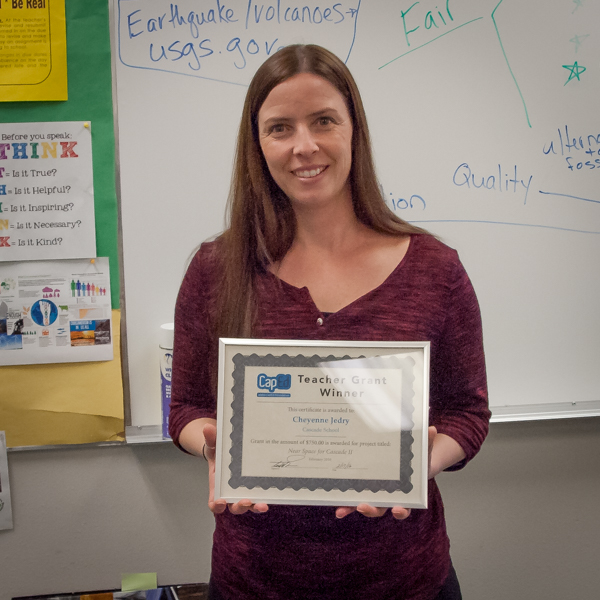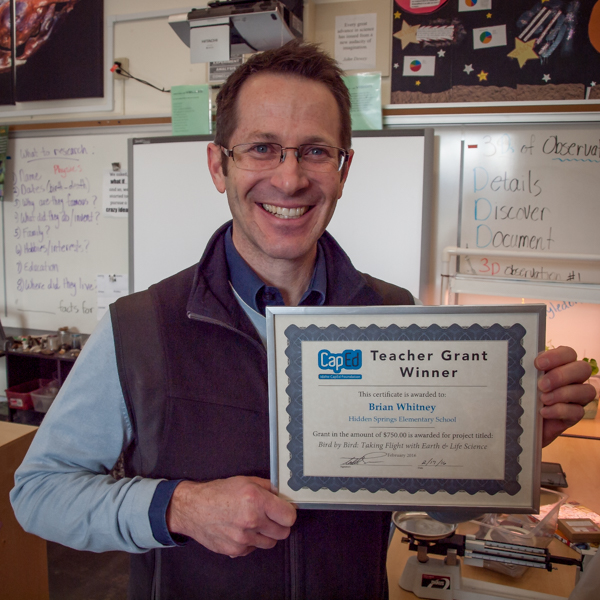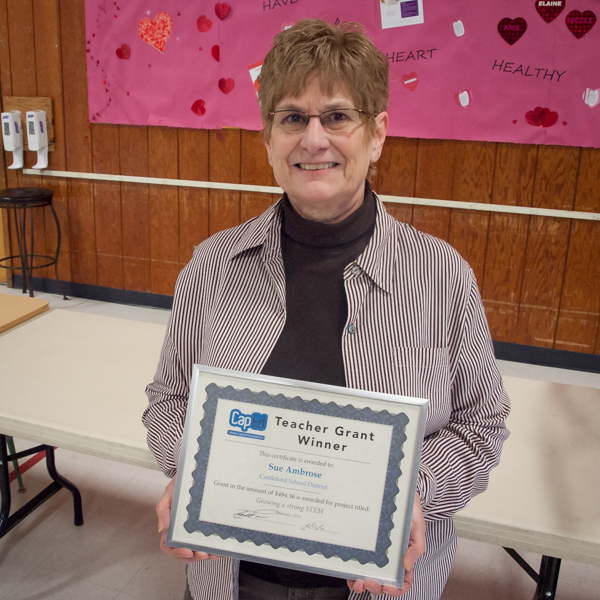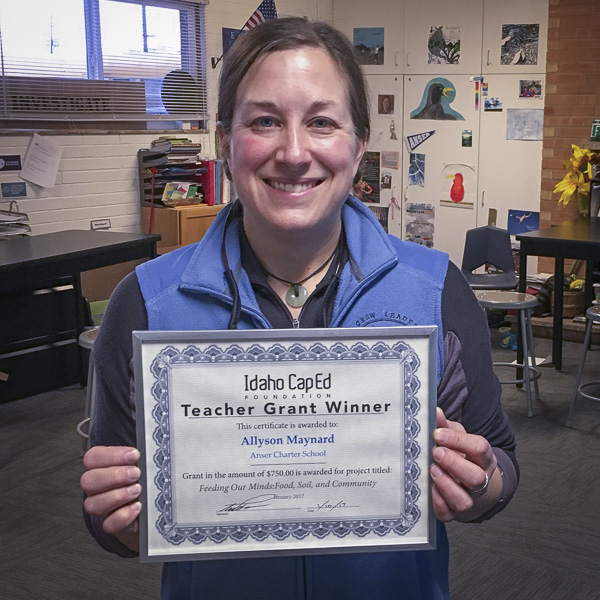February 2016 Grant Recipients

Near Space For Cascade II
Cheyenne Jedry - Cascade School
$750.00
The goal is for students to build a weather balloon that can be launched into near space and collect data for temperature, humidity, air pressure, wind speed, and also take photographs. At the base of the balloon is a box called a balloon sat which is a functioning model of a satellite. The balloon sat will have a radio tracking module to keep track of the balloon while it is on its mission. The balloon sat can also carry student experiments with it so that students can see if near space has an effect on it. Students will build the boxes to carry their experiments, test the boxes, and install necessary technological components for it to be successful. When the balloon is launched it will collect data and return the data for student analysis.

Bird by Bird: Taking Flight with Earth & Life Science
Brian Whitney - Hidden Springs Elementary School
$750.00
Participation in Bird by Bird will help our students build an appreciation of local habitats, an understanding of bird migration and diversity, and students will apply data collection and analysis skills as they engage in authentic care for and observation of local bird populations. Students observe, collect and record data to help understand and track birds, their migrations, and behavior. Students design and implement their own unique program at their school. Teachers record observations about student behavior throughout the year regarding attention span, social interaction, observation skills, physical activity, independent thought, creativity, and teamwork.

Pollinator Garden
Violet Martin - Capital High School
$504.24
The horticulture classes and environmental science classes have met together to plan a pollinator garden on Capital High School's campus. Our plan is to plant native plants and flowers to attract pollinators to our garden to enrich lessons on flowers, annuals, perennials, pollinators, Colony Collapse Disorder, sustainability and native plants to our region. The horticulture classes can use this garden to learn parts of a flower, pollination, fertilization, seed production, seed saving and seed germination. The environmental science classes can use the garden to focus more on native vs non-native plants, importance of pollinators to our society and food security. Art classes can also benefit from the pollinator garden for photographing or drawing.

Growing A Strong STEM
Sue Ambrose - Castleford School
$494.36
As a teacher of 21st Century learners I want to create a STEM based curriculum beginning in the the 4, 5, and 6th grades in my school. There is the need for a curriculum that is multidisciplinary and not isolation based. With a science curriculum incorporating the four academics disciplines of Science, Technology, Engineering, and Mathematics (STEM) and with a writing component added our students will be immersed in a well rounded multidisciplinary science curriculum. Thus, our science curriculum will be driven by problem-solving, discovery, exploratory learning, and students who are actively engaged in a situation that requires them to find a solution.

Math Manipulative
Sheli Irish - Morningside Elementary School
$271.21
Rekenreks help with natural mathematical development. They help students generate a variety of addition and subtraction strategies. Learning basic number sense is a huge part of our second-grade curriculum, the rekenreks will help students build that foundation. I would also like to seek fund for place value discs. In second, grade the main focus is place value and we need many tools to help build this understanding. Place value discs would help students manipulate the numbers which better prepares them for addition and subtraction. When students have a better understanding of place value they do not struggle as much when learning addition and subtraction strategies.

Exploring Computer Science
Ken Manship - Vallivue High School
$699.98
CS10K is a program funded by the National Science Foundation and maintained by the American Institutes for Research. Their objective is to have 10,000 well-trained computer science teachers in 10,000 high schools across the United States. I am currently working on a Masters in STEM education with a Computer Science emphasis funded by the National Science Foundation. As a result, we are implementing a technology department at Vallivue High School in the Vallivue School District beginning this August. Along with two additional computer classes, we will be deploying the Exploring Computer Science Curriculum.

Microbiology / Handwashing Lab
Shane Johnson - Lone Star Middle School
$688.35
During this lab students will perform real science using cotton tipped applicators to sample their microbiome (the bacteria that live normally on your body) and grow them in a petri dish. Students will test the effectiveness of hand washing vs. hand sanitizer as well as have the opportunity to sample the bacteria on everyday surfaces of their choice (cell phones, door handles, book bags, etc)- the "ewww" factor is very engaging. This lab aligns with our studies of the human body, specifically the immune and integumentary systems and how they work together to keep the whole system safe from the omnipresent microorganisms in our environment. it will also serve as a conversation stem that looks at the microbiome's beneficial roles.

Engineering Our Future - Maker Space
Allyson Maynard - Anser Charter School
$750.00
The world that my students will be growing up into will be filled with opportunities for creative problem-solving; global and local environmental and social issues will require innovative and forward-thinking solutions. By providing the foundations of design principles, collaborative problem-solving, and inventive resource use, I will be helping them to develop the skills and confidence that will carry them into a new generation of engineering and design. This grant would allow me to build a maker space in my junior high science classroom to put tools and supplies (see list in project expenses) into the hands of my science students. We will be ending the year with a project examining environmental issues on both global and local scales.